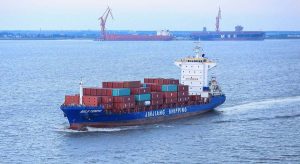Maritime transport is one of the oldest, longest-lived and most important transport systems that exist, since despite the arrival of new forms of transportation and transportation such as the car or plane, this continues to be the main way of moving merchandise.

However, the waters through which these merchant ships and cargo ships that deliver the vast majority of imports circulate continue to be an unknown area for human beings, and the depths are full of unsolved mysteries.
But little by little and thanks to human curiosity and technology, our planet holds fewer and fewer secrets for us, including the sea, and therefore, driven by advances in the sector, we are finding new alternative routes that make maritime transport more efficient in regards to both in money as well as time.
And this is what researchers from the IE University and the University of Cádiz are working on, with a project with which they intend collect all possible oceanographic and meteorological data to use an algorithm to calculate marine routes that are safe and efficient.
In other words, they are working on create a kind of maritime Google Maps to provide a solution to the constant problems that arise on marine routes, from their inefficiency, to economic crises caused by problems on the routes, such as the Red Sea or accidents that cause stoppages in goods.
A system to pollute and consume less
The idea is to use data from public repositories such as NOAA, Copernicus or HYMON with information such as current predictions, fuel consumption on each route, emissions released by ships and marine conditions of the displacement so that the algorithm makes estimates and designs alternative routes that reduce consumption, delivery time and even avoid accidents.
According to the researchers, this project could help save up to almost 7% fuel, in addition to reduce emissions. Although Due to Climate Change, this system is having problems, since the weather and currents change constantly and it is very difficult to accurately predict the changes that may affect the efficiency of a route.
Sources: ElEconomista









